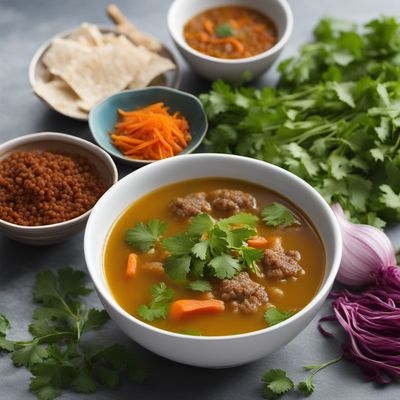
Ingredient
Yak fresh meat
The Exquisite Delicacy of Yak Meat
Yak meat is lean and dark red in color, with a distinct gamey flavor that is often described as a cross between beef and lamb. It has a tender texture and is well-marbled, making it ideal for grilling, roasting, or braising. Its appearance is similar to beef, but with a slightly sweeter taste.
Origins and history
Yak meat has a long history and is deeply rooted in the culture of the Tibetan Plateau and other high-altitude regions of Central Asia. Yaks have been domesticated for thousands of years and are primarily raised for their meat, milk, and fiber. Yak meat is considered a luxury ingredient and is often reserved for special occasions or festive celebrations.
Nutritional information
Yak meat is a good source of high-quality protein, iron, zinc, and vitamin B12. It is also lower in fat and cholesterol compared to beef, making it a healthier alternative for meat lovers.
Allergens
Yak meat may cause allergic reactions in individuals with a sensitivity to red meat or those who are allergic to beef or lamb.
How to select
When selecting yak fresh meat, look for cuts that are bright red in color and have a fine texture. The meat should be firm to the touch and free of any unpleasant odors. Avoid meat that appears discolored or has excessive fat or connective tissue.
Storage recommendations
To store yak fresh meat, it is best to wrap it tightly in plastic wrap or butcher paper and keep it in the coldest part of the refrigerator. It can be stored for up to three days. For longer storage, it can be frozen. To maintain its quality, thaw frozen yak meat in the refrigerator before cooking.
How to produce
Yak meat is primarily produced in high-altitude regions such as the Tibetan Plateau, Nepal, Bhutan, and parts of Central Asia. It requires a cold climate and access to high-quality pasture for grazing. Yak farming is a traditional practice that involves a close relationship between humans and animals.
Preparation tips
Yak meat can be prepared in various ways, including grilling, roasting, braising, or stir-frying. It is often marinated to enhance its flavor and tenderness. Yak meat pairs well with bold spices and herbs, such as cumin, coriander, and garlic. It is commonly used in traditional Tibetan dishes such as yak momo (dumplings), thukpa (noodle soup), and shapta (stir-fried yak meat).
Substitutions
Beef or bison can be used as substitutes for yak meat, as they have a similar flavor and texture. However, the taste may be slightly different. Other alternatives include lamb or venison.
Culinary uses
Yak fresh meat is commonly used in traditional Tibetan and Central Asian cuisines. It is often featured in festive dishes, special occasions, or as a symbol of hospitality. Yak meat can be found in dishes such as yak steak, yak burgers, yak stew, and yak jerky.
Availability
Yak fresh meat is primarily available in high-altitude regions of Central Asia, including Tibet, Nepal, Bhutan, and parts of China and Mongolia.
More ingredients from this category

Zebu fresh meat
The Exotic Delicacy

Bovine, minced meat
Versatile Ground Beef

Buffalo, american fresh meat
The Mighty Bison

Cow, ox or bull fresh meat
The Prized Protein: Exploring Cow, Ox, or Bull Fresh Meat

Buffalo fresh meat
The Lean and Flavorful Protein

Calf fresh meat
Tender Delight: Exploring the World of Calf Fresh Meat

Buffalo, african fresh meat
The African Delicacy: Fresh Buffalo Meat
Recipes using Yak fresh meat

Tibetan Bori-Bori Soup
Hearty Tibetan Dumpling Soup: A Taste of Comfort and Tradition

Sikkimese-inspired Ris e Malastre
Himalayan Delight: Sikkimese-inspired Ris e Malastre

Tibetan-inspired Teroldego Rice Bowl
Himalayan Delight: Teroldego Rice Bowl with Tibetan Flavors

Sikkimese-inspired Balšića Tava
Himalayan Delight: Sikkimese-inspired Balšića Tava

Sikkimese-style Stuffed Dumplings
Himalayan Delight: Sikkimese-style Stuffed Dumplings

Tibetan-style Meat and Potato Pie
Himalayan Delight: Tibetan Meat and Potato Pie

Bolivian Yuba Stew
Andean Delight: Bolivian Yuba Stew